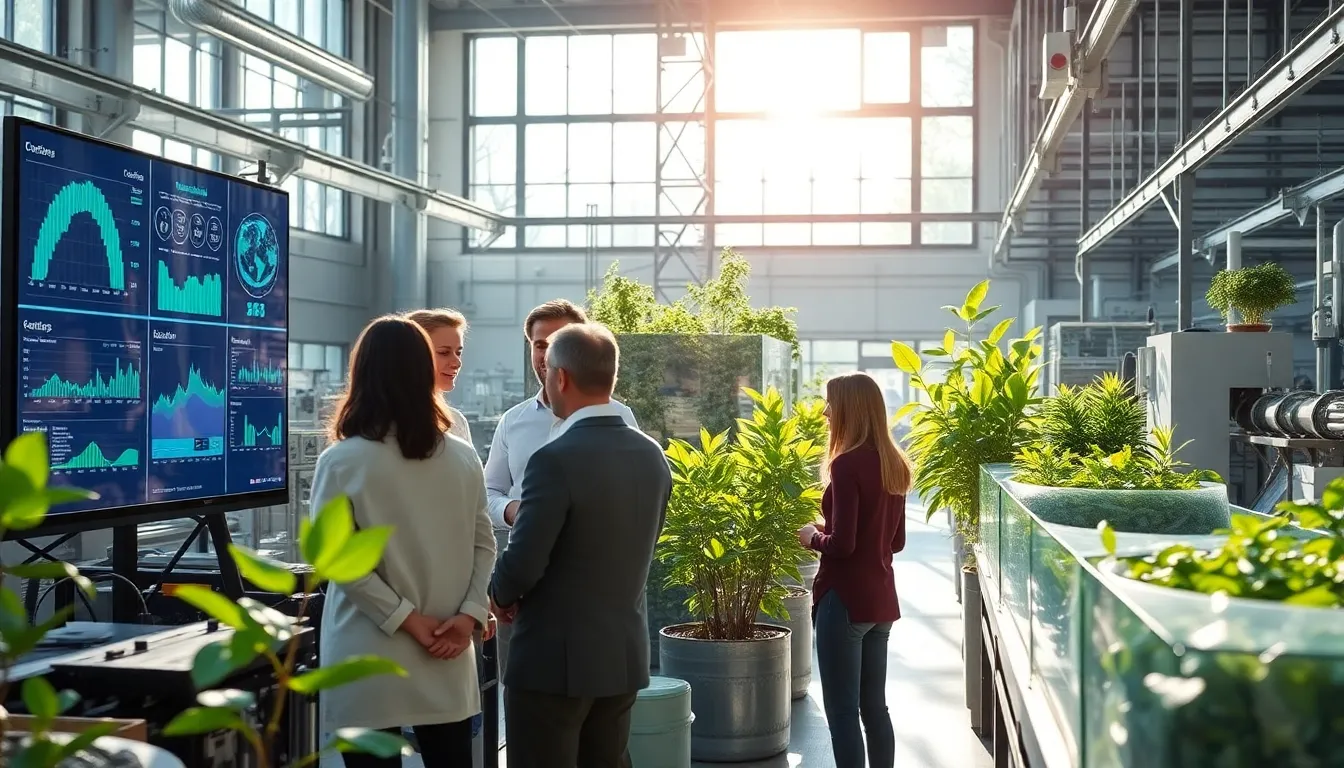In a world where ‘going green’ is more than just a trend for your Instagram posts, sustainable manufacturing technology is taking center stage. Imagine a world where factories are as eco-friendly as your favorite organic café. Not only does it sound like a plot twist in a sci-fi novel, but this reality has closer ties to rhythmical production methods and renewable resources than ever before. Buckle up as we jump into this crucial topic, exploring how industries are stepping up their game to save our planet, one recycled material at a time.
Table of Contents
ToggleThe Importance of Sustainable Manufacturing

Sustainable manufacturing is not just a feel-good buzzword. It’s an essential shift that many industries are making for various reasons. First off, it helps minimize environmental impact, and let’s face it, Mother Nature has been sending us some serious distress signals lately. A focus on sustainability reduces waste, lowers greenhouse gas emissions, and promotes a circular economy where end-of-life products are recycled and reused. Also, companies that invest in sustainable practices often enjoy cost savings through improved efficiency and reduced resource consumption. Finally, the growing consumer demand for eco-friendliness means sustainable manufacturers are often perceived more positively, boosting brand loyalty and attracting a conscientious customer base.
Key Principles of Sustainable Manufacturing
Three key principles embody sustainable manufacturing: resource efficiency, life cycle design, and social responsibility.
Resource Efficiency
Manufacturers are realizing that optimizing resource use is crucial to reducing waste. Efficient energy consumption, along with the use of renewable resources, beats traditional methods like a drum. When resources are optimized, production costs drop, and profits often rise.
Life Cycle Design
Next on the agenda is life cycle design, which considers a product’s environmental impact from its conception to its end of life. By prioritizing recyclability or biodegradability, manufacturers can create products that are not just consumables but part of a larger responsibility towards sustainability.
Social Responsibility
Finally, a commitment to social responsibility ensures that manufacturers treat both their workers and communities ethically. Fair labor practices and engagement with local communities create goodwill that often translates into business success, while maintaining a focus on sustainability.
Innovative Technologies Driving Sustainability
Several innovative technologies are spearheading the movement towards sustainable manufacturing. Let’s highlight a few that are changing the game:
- 3D Printing: This technology allows for finer control over material use, minimizing waste and enabling on-demand manufacturing.
- Artificial Intelligence (AI): AI optimizes logistics, forecasts demand, and streamlines production processes. It ensures that materials are only used when necessary and helps in making better decisions in real-time.
- IoT-Enabled Devices: Internet of Things (IoT) aids in monitoring resource use and efficiency, allowing for adjustments to be made instantly. They can help track energy consumption at every stage in the manufacturing process.
- Biomanufacturing: By using living cells and natural processes to produce materials, biomanufacturing reduces dependency on non-renewable resources. With advancements in biotechnology, this field is set to grow significantly.
Challenges in Implementing Sustainable Manufacturing
While the benefits of sustainable manufacturing are plentiful, challenges do accompany the shift. One major barrier is the upfront costs associated with adopting new technologies. Many companies worry that the transition to sustainable practices might reduce short-term profits.
Another significant challenge is the knowledge gap. Not every organization possesses the expertise to effectively carry out these systems. Training staff and inducing a cultural change within organizations ready for innovation isn’t always a walk in the park. Finally, regulatory compliance varies widely across regions, making it difficult for global manufacturers to standardize sustainable practices.
Case Studies of Successful Sustainable Manufacturing
Looking at real-world examples demonstrates how sustainability can effectively be integrated into manufacturing.
Unilever
This global giant has committed to sourcing all its materials sustainably by 2030. By making eco-friendly choices and reducing packaging waste, they’ve not only benefited the environment but also the bottom line.
Tesla
Tesla isn’t just a trendsetter in the automotive sphere: its gigafactories aim for zero waste and use renewable energy sources. Their commitment to sustainability doesn’t just save the planet: it sets the standard for the entire auto industry.
Interface
A carpet tile company, Interface has embraced a mission to become a carbon negative company by 2040. The incorporation of recycled materials and renewable energy into their processes exemplifies how manufacturers can lead the charge towards a sustainable future without compromising quality.
The Future of Sustainable Manufacturing Technology
The future of sustainable manufacturing technology looks hopeful. With increased investment in research and development, we may see innovations that further reduce emissions and waste. Collaboration among researchers, scientists, and manufacturers is essential. The emergence of smart factories, integrating AI and IoT, is set to become the norm. Supplementing this would be a growing focus on cradle-to-cradle manufacturing, which emphasizes designing products with their entire lifecycle in mind. As awareness around climate change intensifies, so will the demand for responsible manufacturing practices. It truly seems we’re gearing up for a manufacturing revolution.



